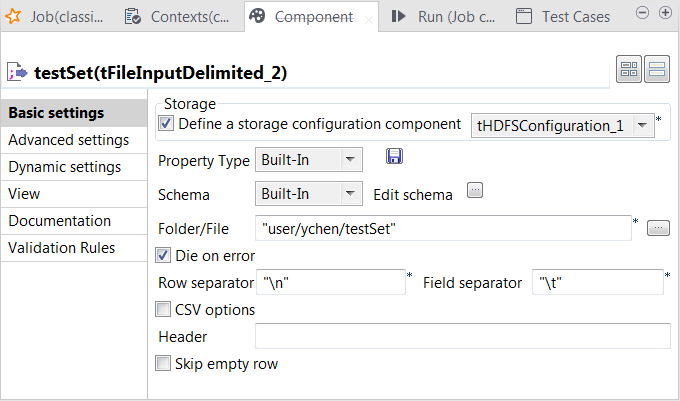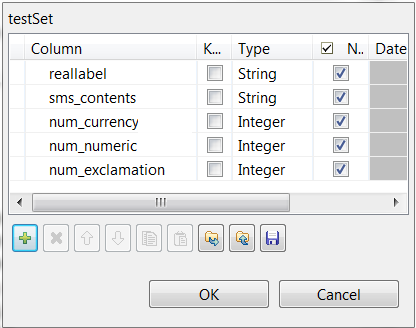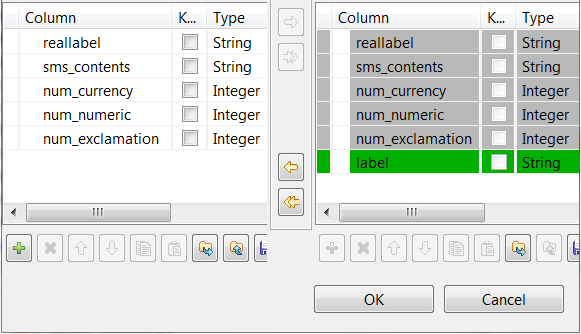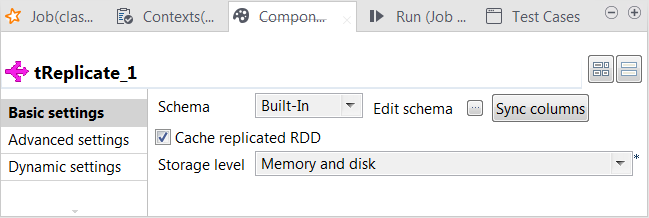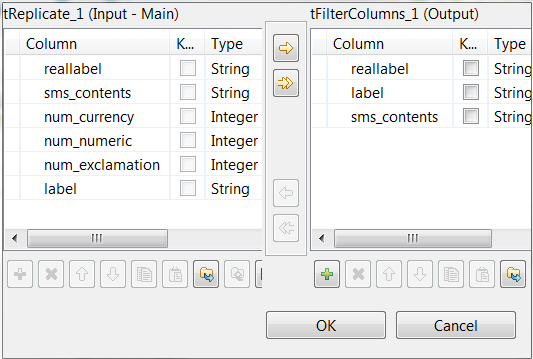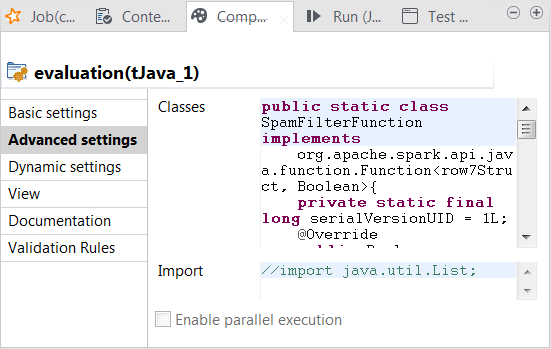Evaluating the classification model
After you created a classification model, you can evaluate how good it
is.
Linking the components
Procedure
Loading the test set into the Job
Procedure
Applying the classification model
Procedure
Replicating the classification result
Procedure
Filtering the classification result
Procedure
Writing the evaluation program in tJava
Procedure
Configuring Spark connection
About this task
Repeat the operations described above. See Selecting the Spark mode.
Executing the Job
Procedure
Results
In the console of the Run view, you can read the classification result along with the actual labels:
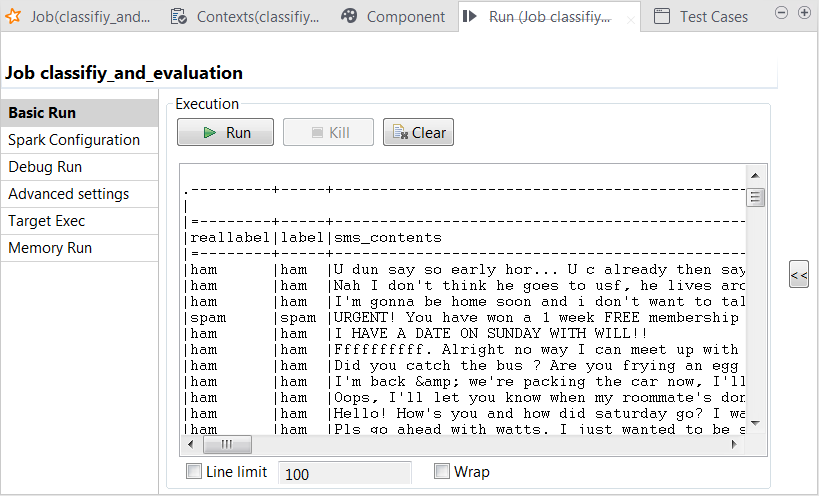
You can also read the computed scores in the same console:
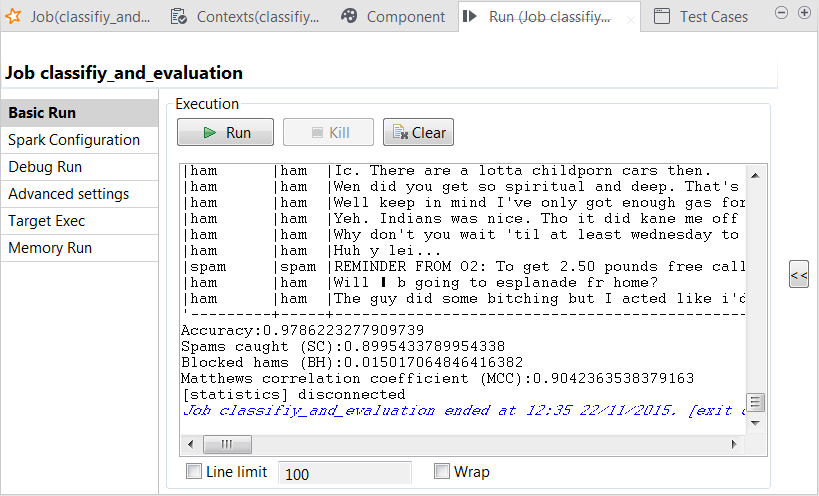
The scores show a good quality of the model. You can still enhance the model by continuing to tune the parameters used in tRandomForestModel and run the model-creation Job with new parameters to obtain and then evaluate new versions of the model.


